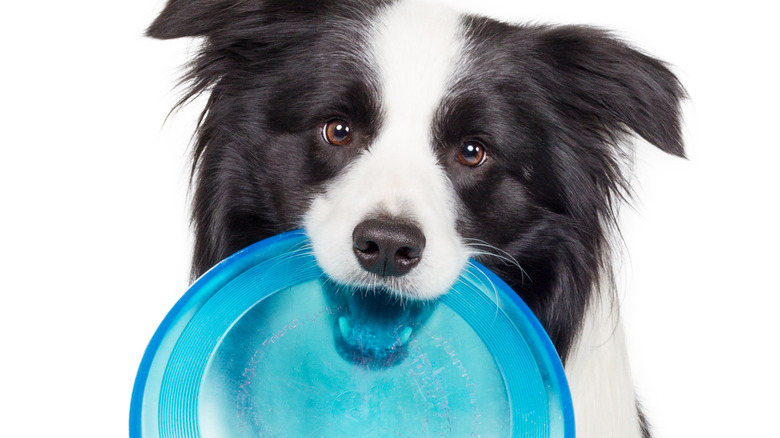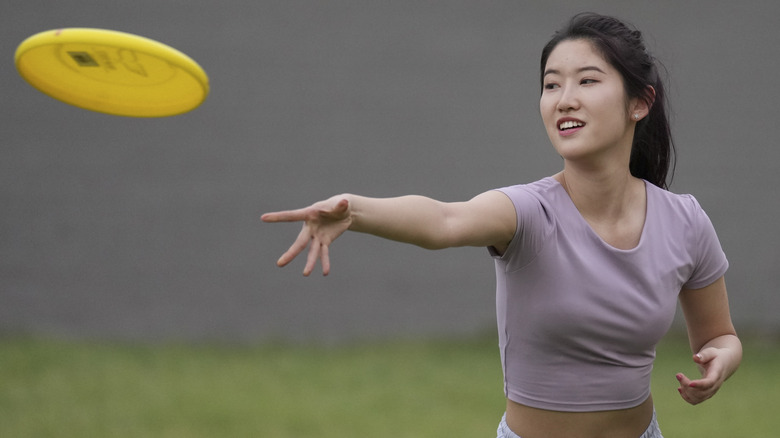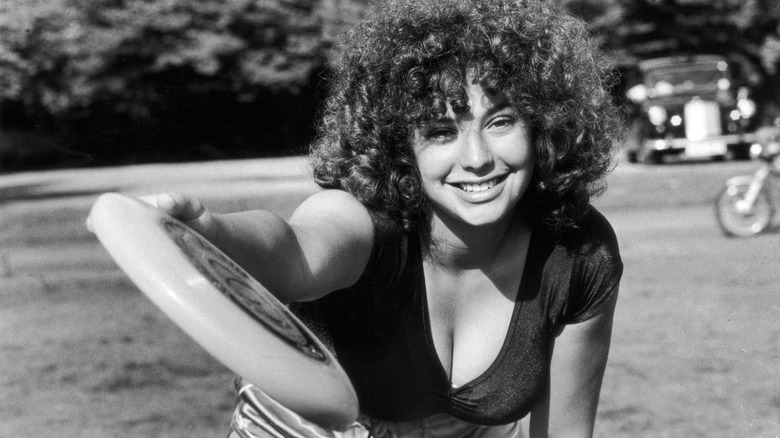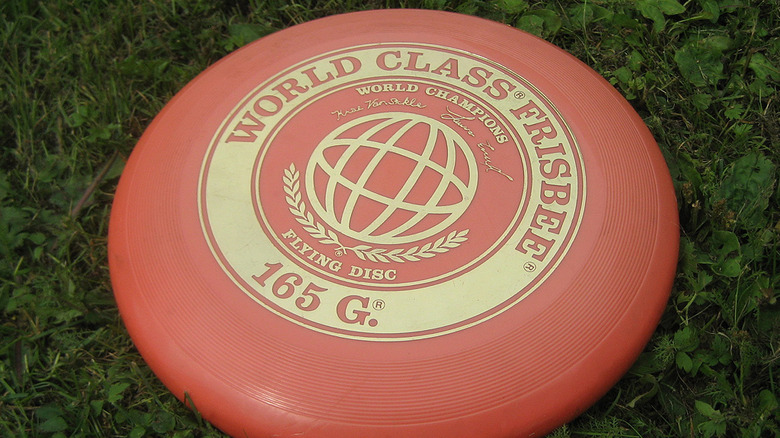The Strange Way A Cake Pan Led To The Invention Of The Frisbee
The Frisbee has long been a staple for a sunny afternoon, especially among college students, including college-level ultimate teams. As of 2022 there are over 800 college ultimate teams in North America and it may not be long before Ultimate Frisbee reaches the big leagues. In 2021, the World Flying Disc Federation (WFDF) started pushing for inclusion in the Los Angeles 2028 Summer Olympics.
But although people have been tossing flat, round objects back and forth for thousands of years, the plastic flying disc known as a Frisbee is less than 100 years old. And it wasn't the product of a toy company. Instead, the Frisbee as we know it today came out of a lazy afternoon and a mother's cake pan.
Considering that so many people had the same idea, it's no wonder that someone decided to make a plastic version. But it really goes to show that sometimes the most ingenious idea may already be in front of everyone's eyes.
Tossing a cake pan
After Thanksgiving dinner in Los Angeles in 1937, Walter Frederick Morrison and his then-girlfriend Lucile Nay spent the evening tossing a popcorn tin lid back and forth. According to The History of the Frisbee by Phil Kennedy and Fred Morrison, they had so much fun tossing the popcorn can lid back and forth that they continued to play with it for several weeks until its edges became sharp and dangerous. Once this happened, Morrison took a round cake pan from his mother's kitchen and they resumed playing. Mental Floss writes that during one afternoon while Morrison and Nay were tossing the cake pan back and forth on the beach, a passerby offered them a quarter for the cake pan, which would be equivalent to $5 today (via CPI Inflation Calculator). Since Morrison knew that the tin only cost a nickel, he promptly accepted the man's offer.
Before long, Morrison set up a business selling "Flyin' Cake Pans" at beaches and parks. Morrison used the money to fund his dates with Nay and even managed to buy a wedding ring for her with the money he made from selling cake pans.
Morrison went on to serve in the U.S. Air Force during the Second World War, but when he returned back home, he continued to experiment with different designs for his flying cake pans, according to Atlas Obscura.
The Flyin-Saucer
After coming back from the Air Force, Morrison partnered up with Warren Franscioni, who agreed to secure the funds for Morrison's designs while they took advantage of a "newly-developed plastic injection process." The History of the Frisbee writes that their business, PIPCO, was born in late 1947, and by March of the following year, Southern California Plastics was creating an early version of the plastic flying disc.
The disc was called the Flyin-Saucer in order to take advantage of the public obsession with UFOs. But there was little retail interest in Flyin-Saucers, and by 1950, Morrison abandoned the business he and Franscioni had created. Franscioni kept the business afloat for a few years and in 1954, when Morrison decided to get back into the flying disc game, he realized that it would be more profitable for him to make his own discs from a new mold than continuing to work with Southern California Plastics.
In 1955, Morrison redesigned the flying disc into what "would prove to be the archetype for the modern plastic flying disc." The name was changed to the Pluto Platter and stamped with the names of the planets around the edge in order to maintain the astronomical connection and public interest in space, according to Mental Floss. Nay also added the instructions "Flat Flip Flies Straight. Tilted Flip Curves. Experiment!" to the disc.
The name gets trademarked
After two years of success selling at fairs, Morrison and Nay caught the attention of the Wham-O company. And on January 23, 1957, they came to an agreement with Wham-O to give the corporation full manufacturing and sales control in exchange for royalties, according to The History of the Frisbee. That May, one of the owners of Wham-O, Rich Knerr, read an article in Sport Illustrated about flying discs, which noted, "Nobody at Princeton seems to know who named the Frisbee, or why."
In fact, the name came from the Frisbie Pie Company, which made pies in Bridgeport, Connecticut. Workers at the pie company spent their breaks throwing pie tins back and forth, as did college students in the Northeast. According to Atlas Obscura, Yale University was a major customer. The pie tins had the name "Frisbie" embossed on them, and one of the legends about the origin of the name claims that students would yell "Frisbie!" to get the attention of those standing in the way of a flying pie tin.
After reading the article, Knerr knew he could capitalize on the Frisbie name. And by spelling the disc's name with an E instead of an I, he avoided any lawsuits. By summer 1957, Frisbees were renamed and in 1958, Morrison got a patent for his Frisbee. And although Time Magazine reports that Morrison thought the name Frisbee was horrible, he "stopped complaining after sales began to soar."



